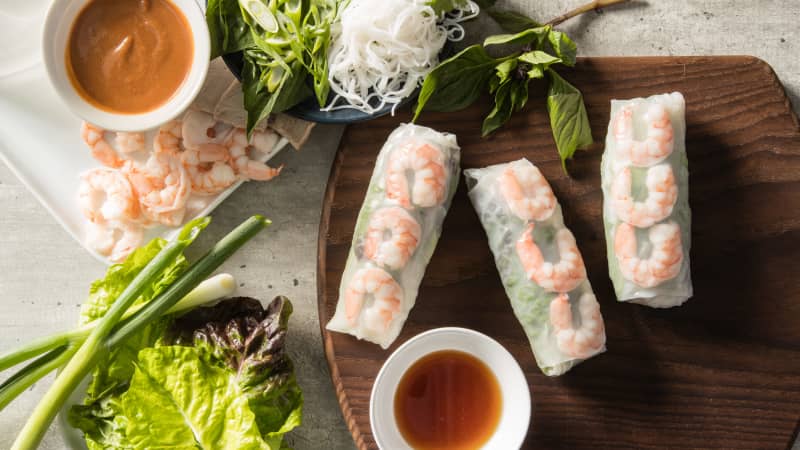My Goals & Discoveries
Tender, juicy shrimp
Cooking shrimp via residual heat prevents them from overcooking.
Stretchy wrappers
We give the rice paper wrappers a quick dunk in cold water and let the surface moisture hydrate them to perfect elasticity.
Plenty of herbs
Combining three herbs and adding ¼ cup of the mixture to each roll is quicker than arranging each leaf individually.
Complementary sauces
A spicy peanut sauce and a traditional fish sauce and lime juice mixture add moisture and complement the delicate flavors of these rolls.









